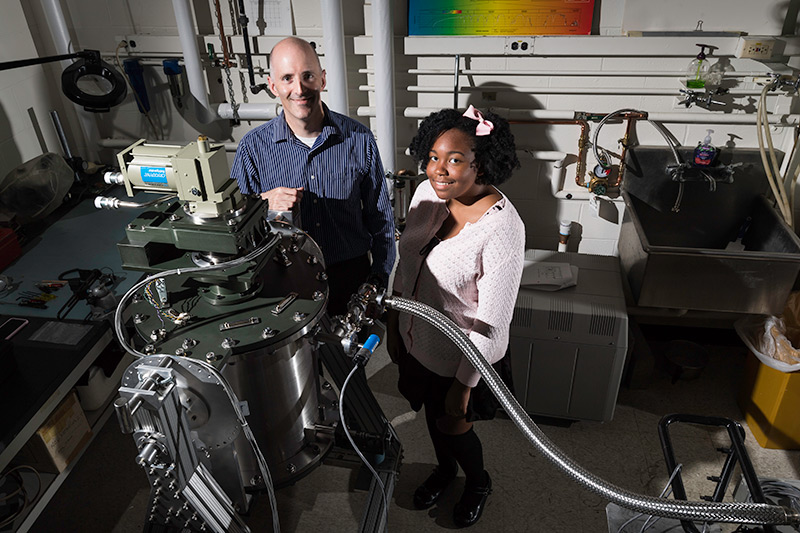
Physics students keep their cool in summer labs
From near-Earth objects to quantum computing, physics students come to Rochester to get an early start on their research careers this summer, working on federally funded and University sponsored projects.

NFL Hall of Famer Jim Kelly to keynote dSports Summit
Former Buffalo Bills Quarterback Jim Kelly will speak at UR Medicine’s day-long exploration of the latest developments in sports medicine, technology innovation, data analytics, and research.

Researchers, engineers team up on app for caregivers facing FASD
The National Institutes of Health has awarded a $1.5 million grant to support the development of a mobile app providing peer-to-peer interventions for parents of children with fetal alcohol syndrome disorders (FASD).
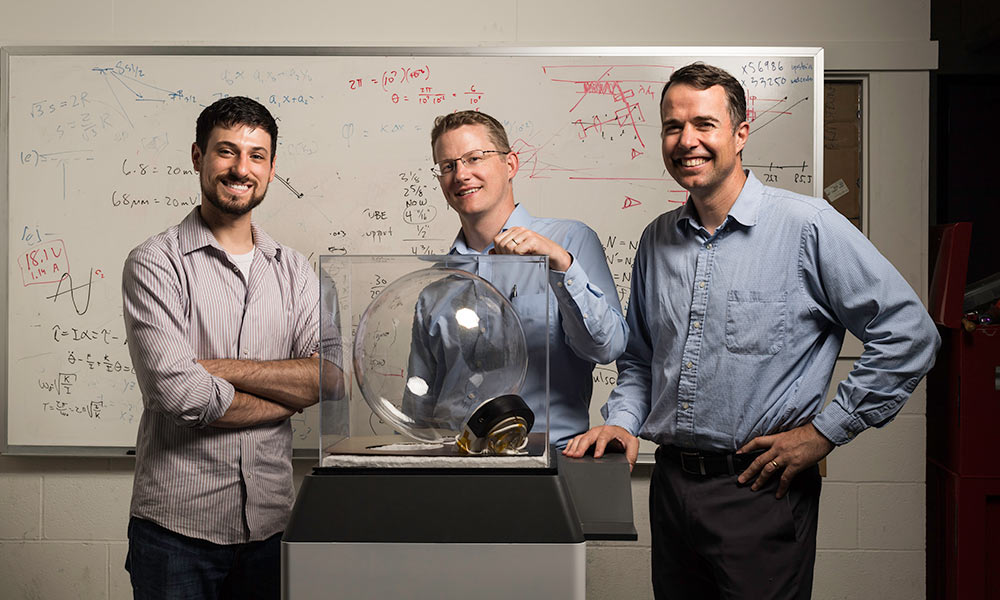
Researchers use lasers to display ‘true’ 3-D objects
3-D displays, once only found in science fiction, are now closer to reality using a 3-D volumetric display where viewers can see images in three dimensions without the use of special glasses or filters.
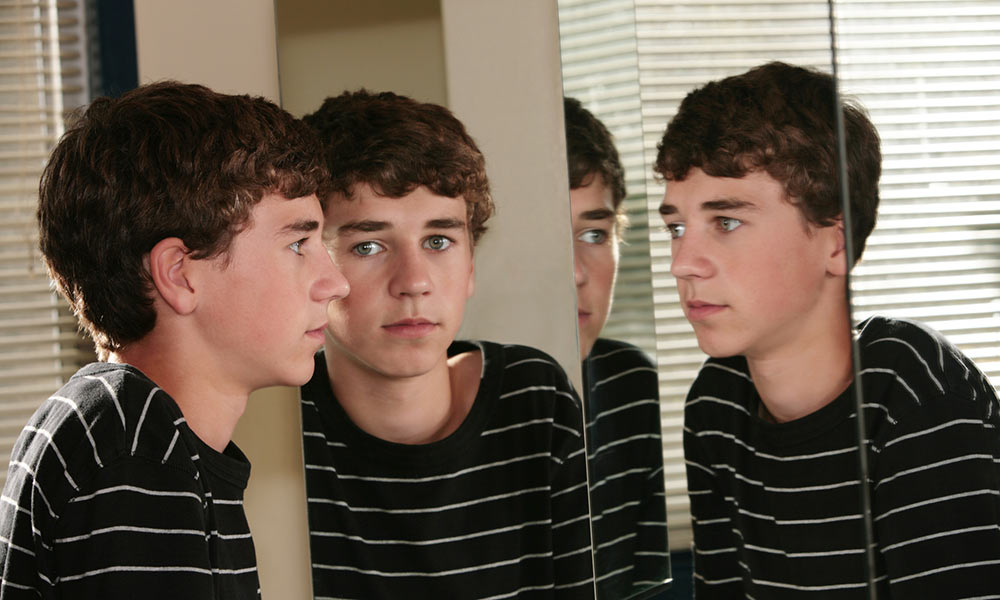
Children with fetal alcohol spectrum disorders lag in emotional understanding
Even in children with an average IQ, researchers found that emotional understanding lags by two to five years behind typically developing peers.
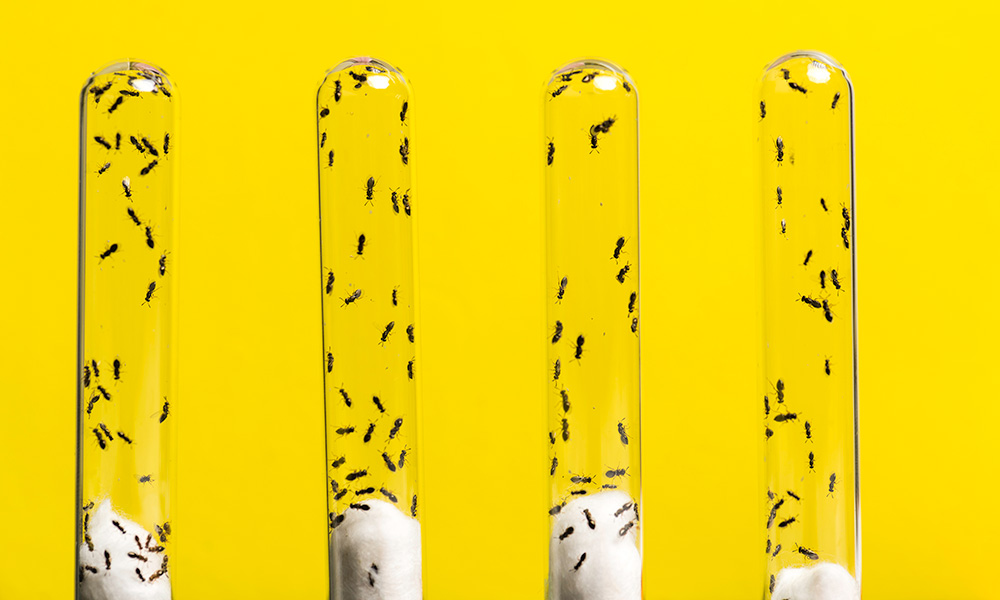
Wasp venom holds clues on how genes get new jobs
University researchers studying the venom of parasitic wasps believe a relatively understudied mechanism for creating new gene functions may be widespread in other species as well.

Largest research vessel on the Great Lakes brings Rochester science to Chicago’s Navy Pier
Researchers led by earth and environmental sciences professor John Kessler met with schoolchildren and local media aboard the Blue Heron to discuss the team’s work on methane levels in the Great Lakes.

Ancient ozone levels provide a glimpse into future effects of climate change
A computer model developed at Rochester, and used to compare model data to analysis on 100,000-year-old Greenland ice cores, has shown a surprising result.

Light emitting quantum dots could ease synthesis of novel compounds
Most chemists have studied quantum dots for their basic properties. But new research by Rochester scientists points to potential applications in the synthesis of pharmaceuticals, fine chemicals, and agro-chemicals.
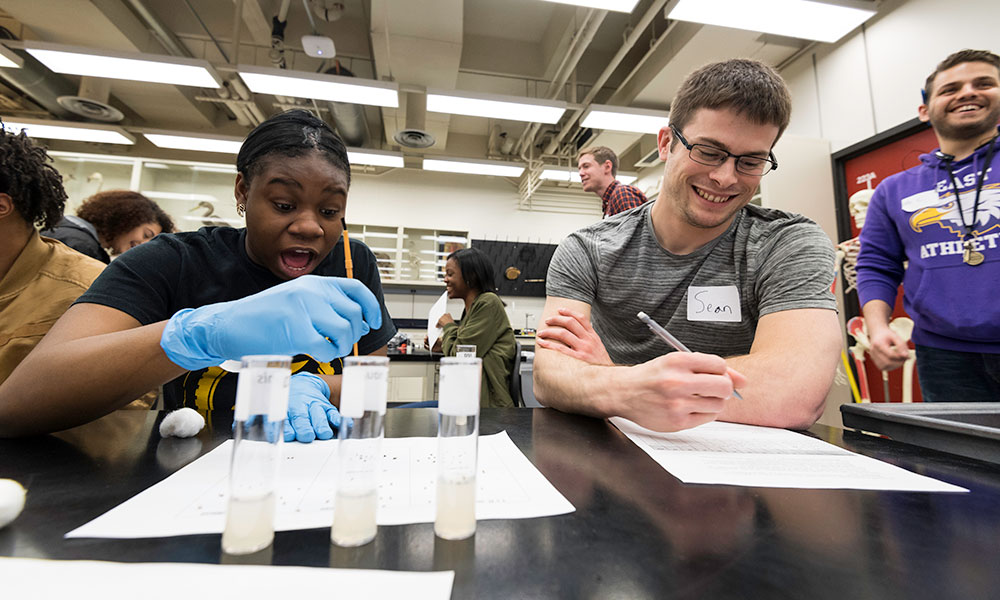
High schoolers come face-to-face with fruit flies
Students from Rochester’s East High School got a sense of how startling science can be when they spent the day in the lab with professors and researchers from the Department of Biology.
